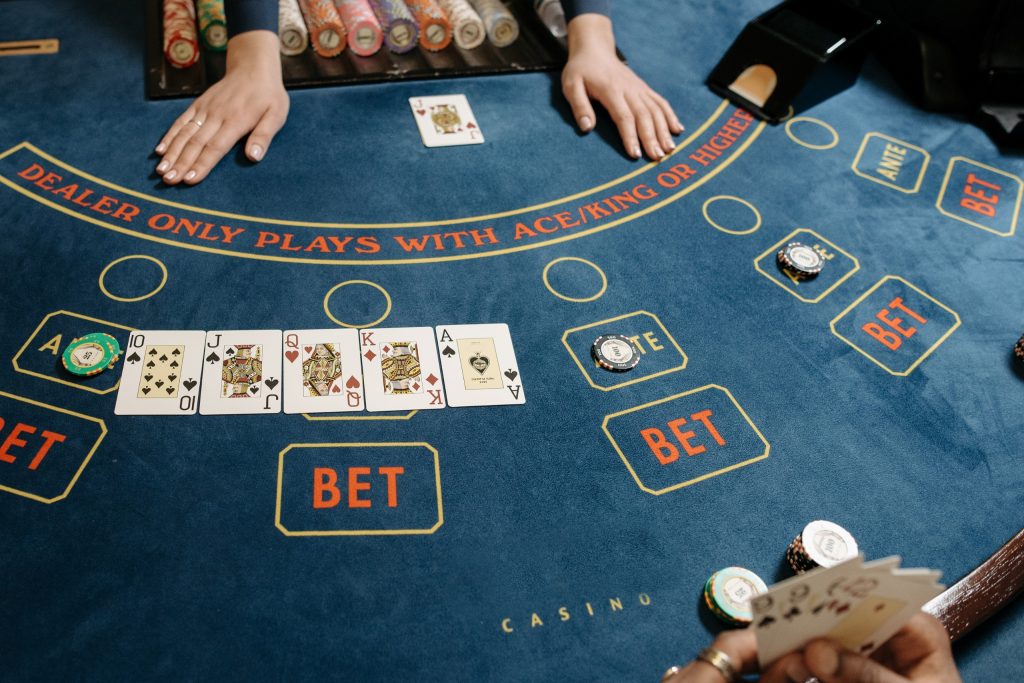Are you new to the world of casinos and looking to try your luck at a popular card game? Baccarat might be the perfect choice for you. With its simple rules and exciting gameplay, baccarat is a favorite among casino-goers worldwide. Whether you’re a seasoned gambler or a complete newbie, this quick and easy guide will help you understand the rules of baccarat and get started in no time.
Baccarat’s origins can be traced back to 19th-century France, where it quickly gained popularity among the aristocracy. Despite its luxurious image, baccarat is actually quite easy to learn and play. The game involves two hands – the player’s hand and the banker’s hand – and the goal is to bet on which hand will have a higher total value. With just a few basic rules, you can start playing baccarat and enjoy the thrill of this classic casino game.
In this guide, we’ll break down the rules of baccarat step by step, explaining the gameplay, hand values, and different types of bets you can place. Whether you’re playing at a physical casino or trying your luck online, understanding the rules of baccarat will give you the confidence to join in on the action and hopefully walk away a winner. So, let’s dive in and discover the world of baccarat!
Basic Rules for Playing Baccarat (バカラルール)
Baccarat is a popular card game known for its simplicity and elegance. With origins dating back to the 19th century, Baccarat has become a favorite in casinos worldwide. Whether you’re a seasoned player or a newcomer to the game, understanding the basic rules バカラルール is essential to fully enjoy the experience. Here, we will delve into the fundamental principles of playing Baccarat, covering everything from the objective of the game to the rules of drawing a third card. By the end of this overview, you’ll have a solid grasp of the game’s basic mechanics, setting the stage for a thrilling and enjoyable Baccarat experience.
The Player’s Hand
In baccarat, the Player’s Hand follows specific rules for hitting or standing. When the initial two cards are dealt, the player must analyze their total score. If the total score is 0-5, the player must hit and draw a third card. However, if the total score is 6 or 7, the player must stand and not draw a third card.
If the player is dealt a natural, which is a total score of 8 or 9, they automatically win unless the banker also has a natural, resulting in a tie. A natural is the best possible hand for the player and occurs when the first two cards add up to 8 or 9.
The player does not have the option to choose their move based on strategy or hunch. Their action is solely determined by the total score of their initial two cards and the predetermined rules for hitting or standing. Understanding these rules is crucial for the player to make informed decisions and play the game effectively.
The Banker’s Hand
In the game of Baccarat, the Banker’s hand follows specific rules and conditions. If the Banker’s hand has a total of 0-2, it must always draw a third card. If the Banker’s hand has a total of 3, it draws unless the Player’s third card is an 8. If the Banker’s hand has a total of 4, it draws unless the Player’s third card is a 0, 1, 8, or 9. If the Banker’s hand has a total of 5, it draws if the Player’s third card is a 4, 5, 6, or 7. If the Banker’s hand has a total of 6, it draws if the Player’s third card is a 6 or 7. And if the Banker’s hand has a total of 7, it stands.
When a player wins by betting on the Banker’s hand, a 5% commission is often charged. This means that if a player bets $100 on the Banker’s hand and wins, they would receive $95 instead of the full $100. The commission is to offset the slightly higher odds of winning when betting on the Banker’s hand.
Betting Options in Baccarat
In baccarat, players have three betting options: Player, Banker, or Tie. When betting on the Player hand, the payout is even money, meaning if you bet $10 and win, you’ll receive $10 in winnings. Betting on the Banker hand also has even money payout, but a 5% commission is taken by the house. A Tie bet has the highest payout at 8:1, but it also has the highest house edge, making it the riskiest bet.
There are different baccarat betting systems, such as the Martingale system, Paroli system, and Labouchere system, which are used to guide players on how much to bet and when to bet based on the outcome of previous hands. Common bets in the game include Player Pair and Banker Pair, which offer higher payouts for correctly predicting matching pairs in the respective hands.
When determining the worth of each wager, it’s important to consider the payout and house edge. The Banker bet has the lowest house edge at 1.06%, making it the most favorable option. The Player bet has a slightly higher house edge at 1.24%, while the Tie bet has a significantly higher house edge at 14.36%, making it the least favorable option.
Baccarat Strategies to Keep In Mind
When playing Baccarat, it’s important to have a solid strategy in place to maximize your chances of winning. Whether you’re a beginner or an experienced player, there are a few key strategies to keep in mind that can help improve your success at the game. From managing your bankroll effectively to understanding the odds and betting intelligently, these Baccarat strategies can make a significant difference in your overall gameplay.
Card Counting Techniques
In baccarat, card counting can be implemented by using assigned values for the cards and understanding the unique scoring system. The assigned values are as follows: 10s and face cards are valued at 0, aces are valued at 1, and all other cards are valued at their face value.
To track the count, start with a count of 0 and add or subtract the assigned values of the cards as they are dealt. For example, if a 3 and a 7 are dealt, the count would increase by 0 and 7, bringing the count to +7. It’s important to note that in baccarat, the count does not have as much significance as it does in other card games, but it can still provide an indication of when to bet higher or lower.
Understanding the baccarat drawing rules is crucial when using card counting techniques. This includes knowing when a third card is drawn for the player or the banker based on their initial hand total. These rules can affect the count and ultimately, the betting strategy.
Betting Systems Used in Baccarat
Baccarat betting systems offer various strategies for players to manage their bets and potentially increase their winnings. Positive progression systems involve increasing the bet after a win, such as the Paroli strategy, while negative progression systems, like the Martingale strategy, involve increasing the bet after a loss. The 1-3-2-6 strategy focuses on increasing bets in a specific sequence, while the 1-3-2-4 strategy follows a similar pattern with different multipliers.
Advantages of these systems include potentially maximizing wins and managing losses, but disadvantages include the risk of significant losses with negative progression systems. In baccarat gameplay, players can apply these strategies by managing their bets based on the outcomes of previous hands to potentially maximize profits.
Baccarat offers three types of bets: Player, Banker, and Tie. The Player and Banker bets have respective payouts of 1:1 with odds of approximately 49% and 45%, while the Tie bet has a higher payout of 8:1 but lower odds of approximately 9%. Understanding the odds and payouts of these bets can help players make informed decisions when using betting systems in baccarat gameplay.
Banker’s Edge and House Edge in the Game of Baccarat
In the game of Baccarat, the banker’s edge and house edge can be calculated by considering factors such as the type of bet, number of decks used, and any potential commissions. The banker’s edge is the advantage the banker bet has over the player bet, while the house edge is the advantage the casino has over the players.
The type of bet in Baccarat significantly impacts the banker’s and house edge. The banker bet has a lower house edge compared to the player bet, making it more favorable for players. The number of decks used also plays a role, with a smaller number of decks reducing the banker’s and house edge.
Commissions in Baccarat, typically 5% on winning banker bets, can also affect the banker’s and house edge. This can increase the overall advantage for the casino, therefore impacting the odds of winning for the players.
Considering these factors, the banker’s and house edge are determined by the combination of the type of bet, number of decks, and potential commissions. Understanding these factors can help players make informed decisions and potentially improve their odds of winning in the game of Baccarat.

Conclusion
In conclusion, playing baccarat offers a simple yet exhilarating gambling experience that has contributed to its immense popularity in the casino world. With its straightforward rules and fast-paced gameplay, baccarat provides a thrilling opportunity for players to increase their bankroll and win big. Alongside the excitement of the game, it is crucial to ensure responsible gambling practices are followed. Our top-ranked casino platforms offer a range of resources and tools to support responsible gambling, including self-exclusion options, gambling limits, and access to professional assistance for those with gambling problems.






